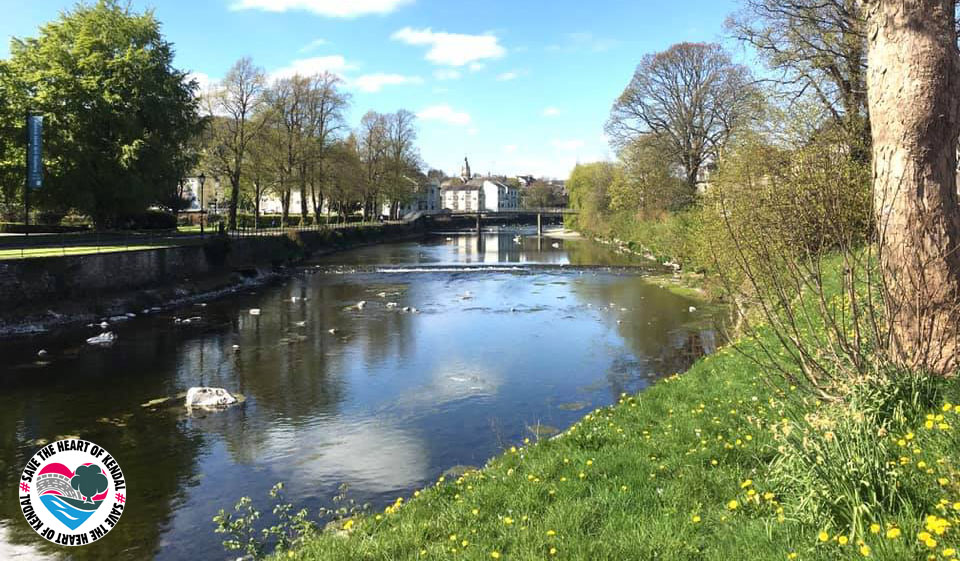Dredging is the act of removing loose sediment and other deposition from the riverbed and transporting it to another location.
During large-scale events the river is unable to cope with the volume of water that needs to be transported, and bursts its banks. We have noticed multiple people calling for the Kent to be dredged as a solution for Kendal. Below we detail some of the arguments against dredging, and why this won’t provide a solution for Kendal.
- Dredging has been shown to have little or no impact on the ability of a river system to respond to high water events. The increase in volume of a watercourse gained by dredging is minimal when compared to the volume of water requiring transportation. (Source)
- Dredging can increase the speed at which water moves through a physical location. This has many unintended consequences, the most notable of which is the increased downstream risk due to the flood peak travelling downriver faster (1, 2,3).
- Damage to wildlife and ecosystems.
Dredging severely impacts the habitats of invertebrates, which has a knock on effect further up the food chain on fish, and then on top predators such as Otters and Kingfishers. (Source)
Due to increased erosion from the faster flowing water it can have a big impact on the bankside species too. Existing species are removed and invasive species such as Japanese Knotweed colonise the banks of watercourses. (Source)

Increased erosion of the banks and bridges at dredging sites. Batman Bridge has already become unstable as a result of high water events. As dredging would increase the speed of water through town, this would risk the rest of our bridges, as well as increasing erosion of the banks of the river, requiring future engineering works and impact on our town (4).
Other protected species such as freshwater pearl mussels (5) and white clawed crayfish (6)are impacted by the removal of sediment and loss of habitat, as well as small riverside mammals such as water voles (7).
- Dredging cannot be carried out once and then ignored. It requires constant intervention and needs to be repeated frequently. Deposition occurs as a natural process, and continues to happen. In the Somerset Levels in 2014 dredging removed 220,000 tonnes of sediment, at a cost of £6million. This was less than the annual sediment load of the river, and so would need to be repeated annually in order to have any impact. After 12 years we would have spent the £72 million earmarked for the Kendal Flood Relief Scheme, and still not have a long-term solution (Source).
A river is a system of transporting water from the hills to the sea. In order to effectively manage flood peaks then slowing water transportation from our hills, rather than increasing the speed it can travel through our town should be the first point of call for any flood relief scheme. There are alternatives on the table that work with our local communities and protect our town. Lets not forget that the proposals from the Environment Agency will not protect Kendal from a Storm Desmond level flood, and yet will ruin our towns asthetics, whilst causing untold further economic damage due to the construction post COVID-19. Join us in writing to Giles Archibald to call on him to pause this scheme and allow us at the least to recover economically, whilst working on upland schemes to slow the flow. Call To Action
References
1 Newson, M.D.and Robinson, M. (1983) ‘Effects of agricultural drainage on upland streamflow: case studies in mid-Wales’, The Journal of Environmental Management, 17:333-48.
2 Robinson, M. and Rycroft, D.W., (1999) ‘The impact of drainage on streamflow’, in: R.W. Skaggs and J. van Schilfgaarde (Editors), Agricultural Drainage.
3 Sear, D., Wilcock, D., Robinson, M. and Fisher, K. (2000) ‘River channel modification in the UK’. in M. Acreman (Editor), The Hydrology of the UK, A Study of Change, pp.55-81.
4. Mathias Kondolf G. (1994) ‘Geomorphic and environmental effects of instream gravel mining’, Landscape and Urban Planning, Volume 28, Issues 2–3, April 1994, pp. 225–243.
5. P.J. Cosgrovea and L.C. Hastieb (2001) ‘Conservation of threatened freshwater pearl mussel populations: river management, mussel translocation and conflict resolution’, Biological Conservation Volume 99, Issue 2, June 2001, pp183–190.
6. Stephanie Peay. Guidance on works affecting white-clawed crayfish (2000), Contract Reference: English Nature FIN/CON/139
7. Telfer S (2000) The influence of dredging on water vole populations in small ditches (Scottish Natural Heritage commissioned report F99LF13).


No Comments.